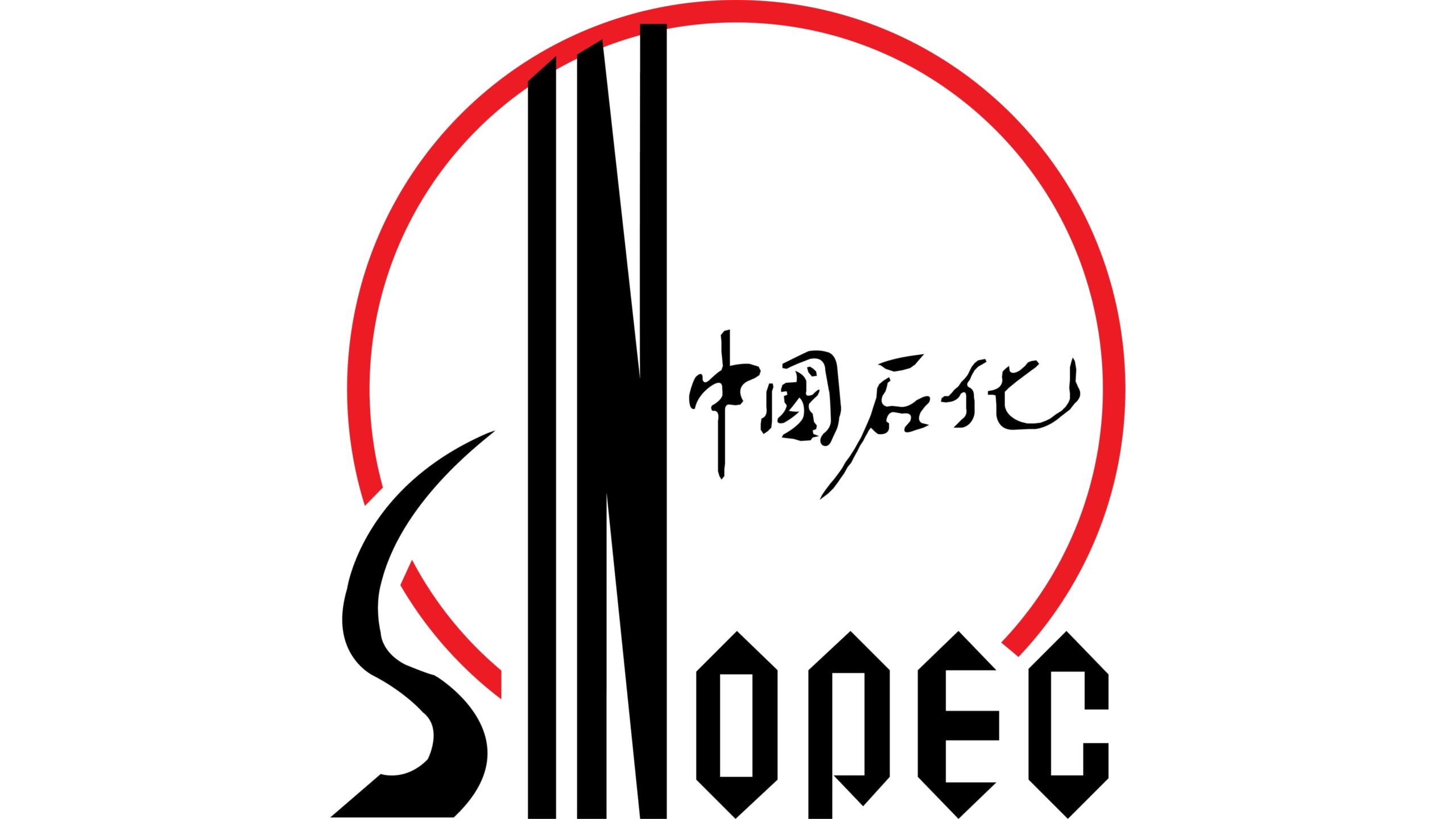Global Agrochemicals Market, By Type, By Crop Type, By Region & Segmental Insights Trends and Forecast, 2024 – 2034
- Industry: Chemicals & Materials
- Report ID: TNR-110-1285
- Number of Pages: 420
- Table/Charts : Yes
- September, 2024
- Base Year : 2024
- No. of Companies : 10+
- No. of Countries : 29
- Views : 10065
- Covid Impact Covered: Yes
- War Impact Covered: Yes
- Formats : PDF, Excel, PPT
Agrochemicals, including fertilizers, pesticides, herbicides, and insecticides, are essential inputs in modern agriculture, playing a critical role in enhancing crop yield and quality. They provide essential nutrients to plants, protect crops from pests and diseases, and control weeds that compete for resources. The global agrochemicals market is driven by the need to meet the growing food demand due to population growth and limited arable land.
Farmers use agrochemicals to boost productivity and ensure crop protection, which is vital for sustaining food security. Key applications in farming include soil fertility management, pest and disease control, and weed management. The market is also witnessing advancements in sustainable agrochemical solutions, reflecting a shift towards environmentally friendly farming practices. In Terms of Revenue, the Global Agrochemicals Market was Worth US$ 285.4 Bn in 2023, Anticipated to Witness CAGR of 6.4% During 2024 – 2034.
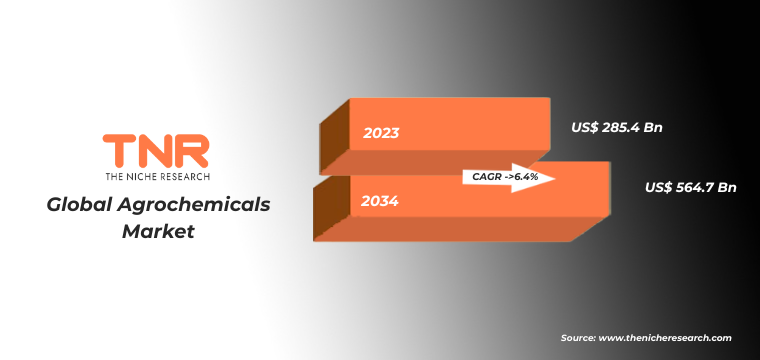
Growth Drivers in the Global Agrochemicals Market
Rising Global Food Demand: The growing global population, expected to reach nearly 10 billion by 2050, drives the demand for higher agricultural productivity. Agrochemicals play a vital role in meeting this demand by enhancing crop yield and quality, enabling farmers to produce more food on limited arable land, thereby supporting global food security.
Technological Advancements in Agriculture: Innovations in precision farming and biotechnology are significantly boosting the use of agrochemicals. Advanced application methods, such as drone spraying and smart irrigation, allow for more efficient and targeted use of fertilizers and pesticides, reducing waste and improving crop protection, which fuels the global agrochemicals market.
Shrinking Arable Land: As urbanization expands, the availability of arable land is decreasing, leading to the need for higher productivity from existing agricultural land. Agrochemicals are essential for maximizing crop output in these limited spaces, ensuring that farmers can maintain high levels of production despite the challenges posed by shrinking farmland.
Increased Awareness of Crop Protection: Farmers are becoming more aware of the importance of protecting their crops from pests, diseases, and weeds. The use of agrochemicals like pesticides and herbicides is crucial in minimizing crop losses and ensuring stable yields, which is driving demand in the global agrochemicals market.
Government Support and Subsidies: Many governments provide subsidies and incentives to encourage the use of agrochemicals in agriculture. These policies aim to boost agricultural productivity and ensure food security, particularly in developing regions. Government support, coupled with regulatory frameworks, helps drive the adoption of agrochemicals, contributing to market growth.
Consumption of Pesticides In India on Different Applications:
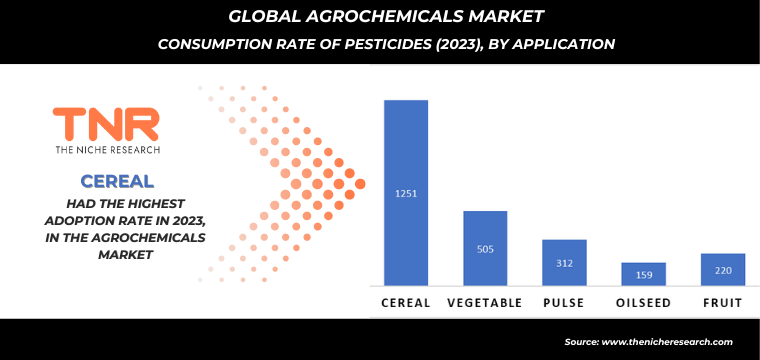
In 2023, the pesticides segment became the second-largest category in the global agrochemicals market with a revenue share of 21.7%, driven by the increasing need to protect crops from pests and diseases. Pesticides are chemical substances used to eliminate or control pests that can damage crops, such as insects, weeds, fungi, and rodents. Their importance lies in their ability to significantly reduce crop losses, ensuring higher agricultural productivity and food security. By safeguarding crops, pesticides help farmers maintain stable yields, which is essential for meeting the growing global demand for food. Additionally, the adoption of integrated pest management practices, which combine chemical and non-chemical methods, has further bolstered the use of pesticides in modern agriculture.
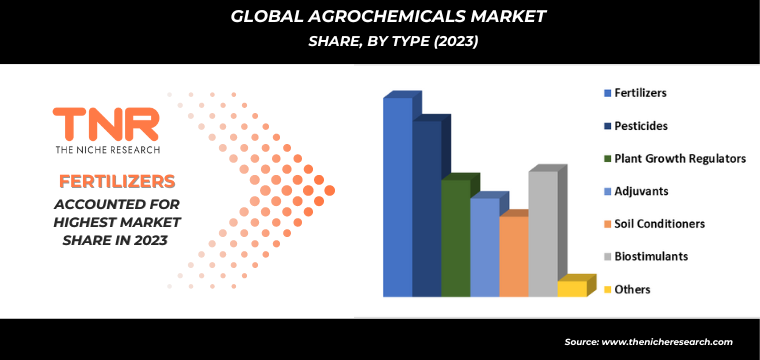
Cereals & grains segment, by crop type, is dominating the global agrochemicals market and is expanding at a CAGR of 4.9% over the forecast timeline. This growth is driven by the high demand for staple crops like wheat, rice, and corn, which are essential for global food security. As these crops are cultivated on a large scale worldwide, the need for agrochemicals, such as fertilizers and pesticides, is significant to ensure optimal yield and quality. Agrochemicals play a crucial role in enhancing soil fertility, protecting crops from pests and diseases, and improving overall productivity. The increasing population and rising food consumption further fuel the demand for cereals and grains, making this segment a key driver of the agrochemicals market’s expansion.
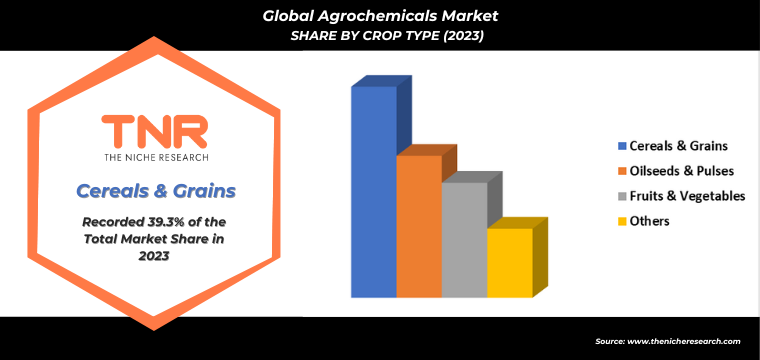
Europe is anticipated to solidify its position as the third leading region in the agrochemicals market, driven by advanced agricultural practices and strong regulatory frameworks. The region’s emphasis on sustainable farming and environmental protection has led to the development and adoption of innovative agrochemical solutions that enhance crop yield while minimizing environmental impact. European farmers are increasingly utilizing precision farming techniques, which optimize the use of fertilizers and pesticides, thereby improving efficiency and reducing waste. Additionally, government support for research and development in agrochemicals and the region’s well-established agricultural infrastructure further contribute to market growth. The rising demand for organic and high-quality food products also propels the use of specialized agrochemicals, reinforcing Europe’s leadership in the global market with revenue share of 20.5%.
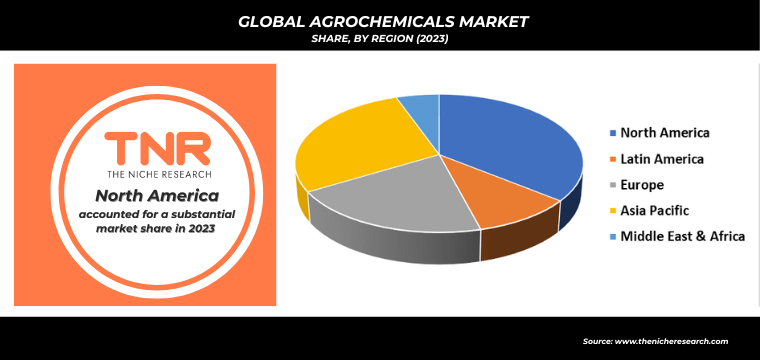
Competitive Landscape
The global agrochemicals market is highly competitive, with key players like Ineos Group Ltd, PhosAgro, OCP Group, and Dow AgroSciences dominating. These companies focus on innovation, mergers, and strategic partnerships to strengthen their market positions, while regional players also contribute to the competitive landscape.
- In February 2022, Adama introduced Timeline FX, a cutting-edge foliar herbicide designed for spring cereals. This herbicide features a combination of three active ingredients, each with a distinct mode of action, along with an integrated adjuvant, offering growers enhanced flexibility. Timeline FX provides the broadest application window available for managing broadleaf and grass weeds in cereal crops.
- In January 2022, Yara and Lantmännen entered into a commercial agreement to introduce fossil-free fertilizers to the market. This collaboration resulted in a contract for green fertilizers, which will be produced by Yara and distributed by Lantmännen in Sweden, with availability starting in 2023.
Some of the players operating in the agrochemicals market are
- Adjuvants Plus Inc.
- Cargill Incorporated
- Evonik Industries
- Graham Chemical Corporation
- Ineos Group Ltd
- Merck KGaA
- NCP Chlorchem (Pty) Ltd
- OCP Group
- PhosAgro
- Praxair Technology, Inc.
- Rashtriya Chemical Fertilizer Ltd.
- Royal Dutch Shell plc
- SABIC
- Southern Agricultural Insecticides, Inc.
- Targray Technology International Inc
- Yara International
- Other Industry Participants
Global Agrochemicals Market Scope
| Report Specifications | Details |
| Market Revenue in 2023 | US$ 285.4 Bn |
| Market Size Forecast by 2034 | US$ 564.7 Bn |
| Growth Rate (CAGR) | 6.4% |
| Historic Data | 2016 – 2022 |
| Base Year for Estimation | 2023 |
| Forecast Period | 2024 – 2034 |
| Report Inclusions | Market Size & Estimates, Market Dynamics, Competitive Scenario, Trends, Growth Factors, Market Determinants, Key Investment Segmentation, Product/Service/Solutions Benchmarking |
| Segments Covered | By Type, By Crop Type, By Region |
| Regions Covered | North America, Europe, Asia Pacific, Middle East & Africa, Latin America |
| Countries Covered | U.S., Canada, Mexico, Rest of North America, France, The UK, Spain, Germany, Italy, Nordic Countries (Denmark, Finland, Iceland, Sweden, Norway), Benelux Union (Belgium, The Netherlands, Luxembourg), Rest of Europe, China, Japan, India, New Zealand, Australia, South Korea, Southeast Asia (Indonesia, Thailand, Malaysia, Singapore, Rest of Southeast Asia), Rest of Asia Pacific, Saudi Arabia, UAE, Egypt, Kuwait, South Africa, Rest of Middle East & Africa, Brazil, Argentina, Rest of Latin America |
| Key Players | Adjuvants Plus Inc., Cargill Incorporated, Evonik Industries, Graham Chemical Corporation, Ineos Group Ltd,Merck KGaA, NCP Chlorchem (Pty) Ltd, OCP Group, PhosAgro, Praxair Technology, Inc., Rashtriya Chemical Fertilizer Ltd., Royal Dutch Shell plc, SABIC, Southern Agricultural Insecticides, Inc., Targray Technology International Inc, Yara International |
| Customization Scope | Customization allows for the inclusion/modification of content pertaining to geographical regions, countries, and specific market segments. |
| Pricing & Procurement Options | Explore purchase options tailored to your specific research requirements |
| Contact Details | Consult With Our Expert
Japan (Toll-Free): +81 663-386-8111 South Korea (Toll-Free): +82-808- 703-126 Saudi Arabia (Toll-Free): +966 800-850-1643 United Kingdom: +44 753-710-5080 United States: +1 302-232-5106 E-mail: askanexpert@thenicheresearch.com
|
Global Agrochemicals Market
By Type
- Fertilizers
- Nitrogenous
- Phosphatic
- Potassic
- Micronutrients
- Others
- Pesticides
- Herbicides
- Insecticides
- Fungicides
- Others
- Plant Growth Regulators
- Adjuvants
- Soil Conditioners
- Biostimulants
- Others
By Crop Type
- Cereals & Grains
- Oilseeds & Pulses
- Fruits & Vegetables
- Others
By Region
- North America (U.S., Canada, Mexico, Rest of North America)
- Europe (France, The UK, Spain, Germany, Italy, Nordic Countries (Denmark, Finland, Iceland, Sweden, Norway), Benelux Union (Belgium, The Netherlands, Luxembourg), Rest of Europe)
- Asia Pacific (China, Japan, India, New Zealand, Australia, South Korea, Southeast Asia (Indonesia, Thailand, Malaysia, Singapore, Rest of Southeast Asia), Rest of Asia Pacific)
- Middle East & Africa (Saudi Arabia, UAE, Egypt, Kuwait, South Africa, Rest of Middle East & Africa)
- Latin America (Brazil, Argentina, Rest of Latin America)
Report Layout:
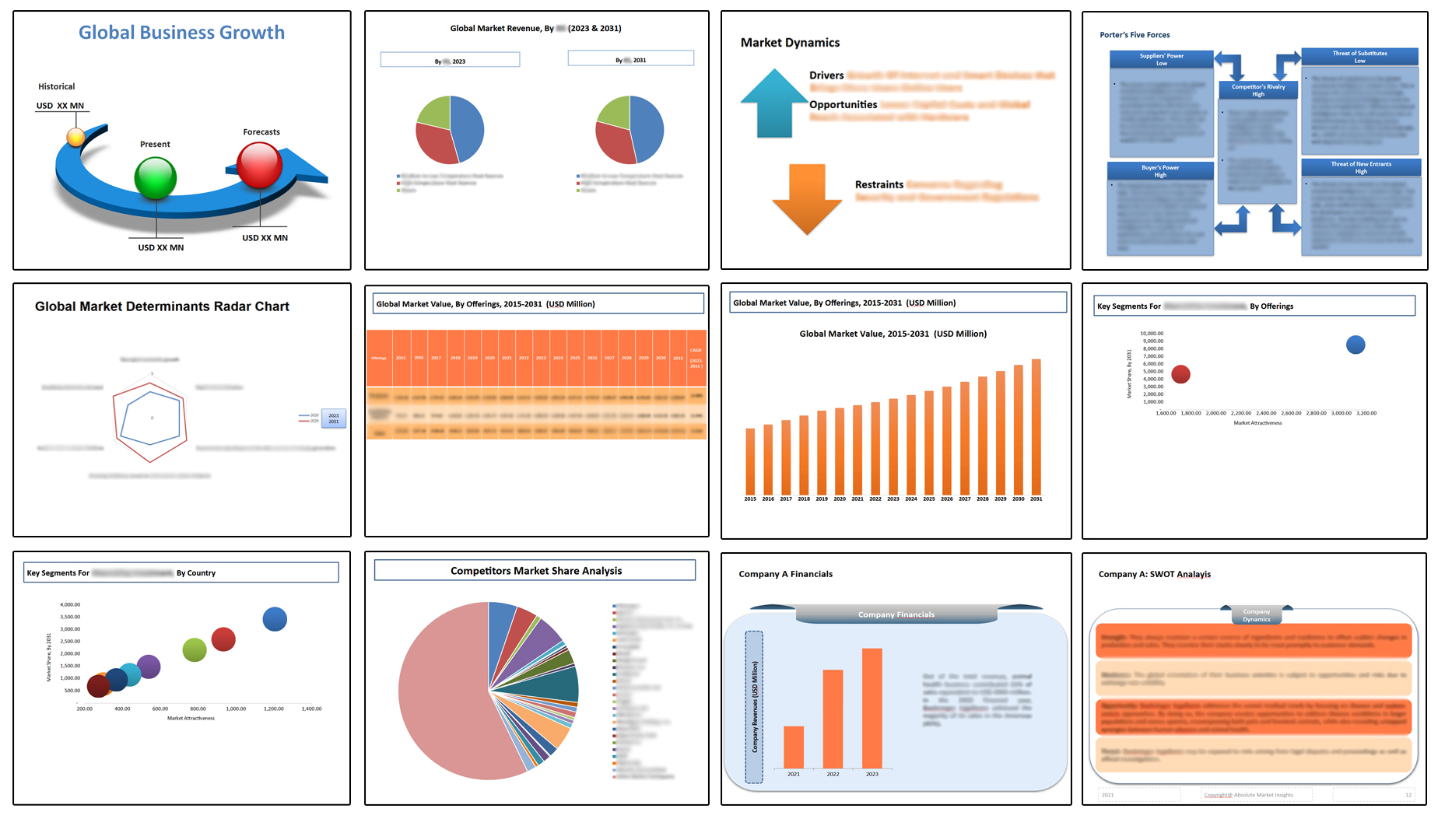
Table of Contents
Note: This ToC is tentative and can be changed according to the research study conducted during the course of report completion.
**Exclusive for Multi-User and Enterprise User.
Global Agrochemicals Market
By Type
- Fertilizers
- Nitrogenous
- Phosphatic
- Potassic
- Micronutrients
- Others
- Pesticides
- Herbicides
- Insecticides
- Fungicides
- Others
- Plant Growth Regulators
- Adjuvants
- Soil Conditioners
- Biostimulants
- Others
By Crop Type
- Cereals & Grains
- Oilseeds & Pulses
- Fruits & Vegetables
- Others
By Region
- North America (U.S., Canada, Mexico, Rest of North America)
- Europe (France, The UK, Spain, Germany, Italy, Nordic Countries (Denmark, Finland, Iceland, Sweden, Norway), Benelux Union (Belgium, The Netherlands, Luxembourg), Rest of Europe)
- Asia Pacific (China, Japan, India, New Zealand, Australia, South Korea, Southeast Asia (Indonesia, Thailand, Malaysia, Singapore, Rest of Southeast Asia), Rest of Asia Pacific)
- Middle East & Africa (Saudi Arabia, UAE, Egypt, Kuwait, South Africa, Rest of Middle East & Africa)
- Latin America (Brazil, Argentina, Rest of Latin America)
The Niche Research approach encompasses both primary and secondary research methods to provide comprehensive insights. While primary research is the cornerstone of our studies, we also incorporate secondary research sources such as company annual reports, premium industry databases, press releases, industry journals, and white papers.
Within our primary research, we actively engage with various industry stakeholders, conducting paid interviews and surveys. Our meticulous analysis extends to every market participant in major countries, allowing us to thoroughly examine their portfolios, calculate market shares, and segment revenues.
Our data collection primarily focuses on individual countries within our research scope, enabling us to estimate regional market sizes. Typically, we employ a bottom-up approach, meticulously tracking trends in different countries. We analyze growth drivers, constraints, technological innovations, and opportunities for each country, ultimately arriving at regional figures.Our process begins by examining the growth prospects of each country. Building upon these insights, we project growth and trends for the entire region. Finally, we utilize our proprietary model to refine estimations and forecasts.
Our data validation standards are integral to ensuring the reliability and accuracy of our research findings. Here’s a breakdown of our data validation processes and the stakeholders we engage with during our primary research:
- Supply Side Analysis: We initiate a supply side analysis by directly contacting market participants, through telephonic interviews and questionnaires containing both open-ended and close-ended questions. We gather information on their portfolios, segment revenues, developments, and growth strategies.
- Demand Side Analysis: To gain insights into adoption trends and consumer preferences, we reach out to target customers and users (non-vendors). This information forms a vital part of the qualitative analysis section of our reports, covering market dynamics, adoption trends, consumer behavior, spending patterns, and other related aspects.
- Consultant Insights: We tap into the expertise of our partner consultants from around the world to obtain their unique viewpoints and perspectives. Their insights contribute to a well-rounded understanding of the markets under investigation.
- In-House Validation: To ensure data accuracy and reliability, we conduct cross-validation of data points and information through our in-house team of consultants and utilize advanced data modeling tools for thorough verification.
The forecasts we provide are based on a comprehensive assessment of various factors, including:
- Market Trends and Past Performance (Last Five Years): We accurately analyze market trends and performance data from preceding five years to identify historical patterns and understand the market’s evolution.
- Historical Performance and Growth of Market Participants: We assess the historical performance and growth trajectories of key market participants. This analysis provides insights into the competitive landscape and individual company strategies.
- Market Determinants Impact Analysis (Next Eight Years): We conduct a rigorous analysis of the factors that are projected to influence the market over the next eight years. This includes assessing both internal and external determinants that can shape market dynamics.
- Drivers and Challenges for the Forecast Period:Identify the factors expected to drive market growth during the forecast period, as well as the challenges that the industry may face. This analysis aids in deriving an accurate growth rate projection.
- New Acquisitions, Collaborations, or Partnerships: We keep a close watch on any new acquisitions, collaborations, or partnerships within the industry. These developments can have a significant impact on market dynamics and competitiveness.
- Macro and Micro Factors Analysis:A thorough examination of both macro-level factors (e.g., economic trends, regulatory changes) and micro-level factors (e.g., technological advancements, consumer preferences) that may influence the market during the forecast period.
- End-User Sentiment Analysis: To understand the market from the end-user perspective, we conduct sentiment analysis. This involves assessing the sentiment, preferences, and feedback of the end-users, which can provide valuable insights into market trends.
- Perspective of Primary Participants: Insights gathered directly from primary research participants play a crucial role in shaping our forecasts. Their perspectives and experiences provide valuable qualitative data.
- Year-on-Year Growth Trend: We utilize a year-on-year growth trend based on historical market growth and expected future trends. This helps in formulating our growth projections, aligning them with the market’s historical performance.
Research process adopted by TNR involves multiple stages, including data collection, validation, quality checks, and presentation. It’s crucial that the data and information we provide add value to your existing market understanding and expertise. We have also established partnerships with business consulting, research, and survey organizations across regions and globally to collaborate on regional analysis and data validation, ensuring the highest level of accuracy and reliability in our reports.


